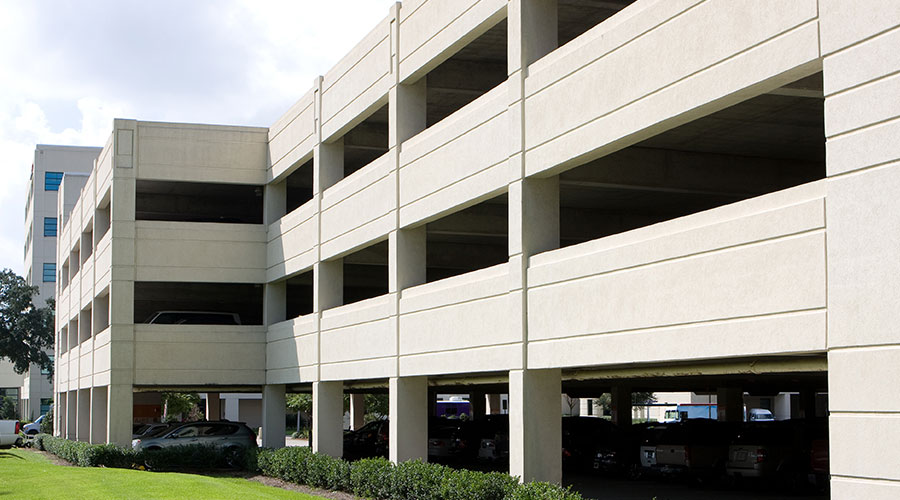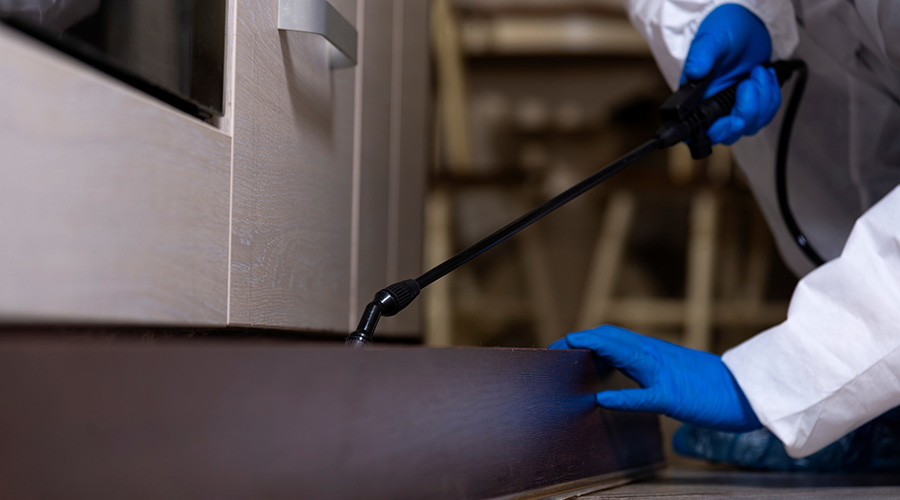Facility Condition Assessments Provide Data for Essential Maintenance
For managers looking to better protect parking structures, FCAs can be important tools that provide critical information and help shape maintenance decisions.
By Dan Hounsell, Senior Editor
Parking structures often are caught in limbo for institutional and commercial facilities. They are not quite out of sight and out of mind the same way roofing systems are, but they often are just as overlooked. Building occupants spend five minutes in parking structures each workday — five minutes in the morning, five minutes in the evening — but otherwise pay no attention to them.
Building owners and facility managers also tend to not pay much attention to parking structures, and that attitude can create a potential financial problem.
“The general attitude toward parking structures is, ‘I want this thing to survive as long as possible, but I really don’t want to put any money into it because my building needs the money,’” says Scott Hargrove, director of engineering for Knott Laboratory, a consulting engineering firm. “Parking structures tend to be an afterthought.”
For managers looking to better protect their parking structures, facility condition assessments (FCA) can be important tools that provide critical information that help shape maintenance decisions.
Making the case
FCAs give managers the information they need to make informed, timely and cost-effective decisions about parking structures. The process begins by understanding the benefits of paying in-depth attention to facility conditions.
“Facility condition assessments can serve a lot of purposes,” Hargrove says. “For structures that are newer, they help set up what long-term repairs and maintenance (managers) should be doing — a maintenance schedule to keep from getting to places where you have major issues in the future.”
Unfortunately, managers often wait too long to get organizational buy-in for assessments.
“People just aren’t doing them, so by the time they call us, we’re into tens of thousands or hundreds of thousands of dollars in repair because you have a structure that’s already starting to fail,” Hargrove says. “If we had been there maybe five years earlier, we could have done a maintenance plan that would have cost a couple hundred dollars a month maybe, and it would have delayed or completely prevented that issue.”
With the understanding that sooner is better for facility condition assessments, when should managers begin the assessments?
“You should probably start FCAs between five and eight years after the structure is built because that’s when you’re going to start to see issues,” he says. “You may see small issues earlier, but if it’s built well and it’s being maintained, five to eight years is the window when you need to start figuring out what other things you need to do beyond general maintenance for the structure.
“What ends up happening is people start to do these when they have (major) issues. That is the approach people take because they don’t want to spend money on their structures. But if you do the FCAs before you start having issues, we can identify things that are going to become more expensive down the road.”
The timing of the assessments is critical because while every element of facility exteriors runs the risk of deteriorating because of the effects of sun, wind and rain, parking structures are especially vulnerable.
“The biggest reason is they’re generally concrete structures, and they’re exposed to the elements,” Hargrove says. “Most of them are not enclosed. Most of them are not waterproofed. Water and freeze-thaw (cycles) depending on where you are in the country, de-icing salts if you’re in areas that have heavy snow in the winter — all these things are on the structure year-round in some places.”
For these reasons, parking structures tend to degrade relatively quickly compared to other facilities. But there is hope.
“It is the area that tends to degrade the fastest, but it’s also the easiest to keep up if maintenance is done on a regular basis,” Hargrove says. “Once an issue is found, it’s really easy to fix it. There’s not a ton of drywall that has to be taken down. You don’t have to pull out windows or take out siding. It’s exposed, so you can fix it right there and then.
“The problem with parking structures is if you don’t maintain them on a regular basis, once they do start to go downhill, the repairs become significantly more expensive with having to rip out concrete, repour, shut down the parking garage — things that nobody wants to have to do.”
Maintenance matters
The next step in ensuring that facility condition assessments of parking structures deliver the data and recommendations owners and managers need to make smart decisions is developing the details of the assessment process.
“For a basic FCA on a parking structure, you want the engineer or whoever’s doing the FCA to walk the entire property, document the entire property, document areas of potential concern, areas that are already concerns and make sure that there are pictures and that the report lines out exactly where these issues were found and the long-term ramifications of not maintaining these items,” Hargrove says. “Then if you walk that parking structure in two years or a year or six months, you should be able to compare what it looked like previously to determine if it’s getting worse.”
What areas and components of parking structures are most likely to show up as trouble spots in facility condition assessments?
“The biggest trouble spots on the actual structures include anywhere where they have an expansion joint,” Hargrove says. “A lot of times, they don’t last as long as the structure does. They need to be replaced on a fairly regular basis and monitored because if they aren’t, water gets into them and then gets into the concrete, and it gets easier access to the rebar, which is a bigger issue.
“The other one is anywhere we have exposed steel. Most of these structures are either precast or tilt up, so they have embed plates that are used to weld pieces together. If those aren’t covered or epoxy coated or dealt with in a way that keeps water off them and keeps rust from starting, the rust goes through those embeds into the structure and ends up in the structural rebar.”
Hargrove recommends two tactics to prevent problems with parking structures. The first is effective drainage.
“Make sure that your drains, scuppers, however you’re getting the water off the structure, are functioning clean and aren’t blocked up because that’s your number one enemy — water that gets stuck and just sits there,” he says. “Second, if you’re in a wet environment or a place that has freeze-thaw (cycles), I highly recommend waterproof traffic coatings that go up the sides of the walls to protect all the joints and keep the water out.”
Perhaps the most effective strategy for protecting parking structures involves a change in priorities and attitudes among owners and managers.
“People always say they don’t have any funds for this,” Hargrove says. “But the problem is that if they don’t have funds for it now when it’s going to cost them $1,000, what are they going to do when it costs $40,000 because it’s actually falling apart?”
Dan Hounsell is senior editor for the facilities market. He has more than 30 years of experience writing about facilities maintenance, engineering and management.
Related Topics:












